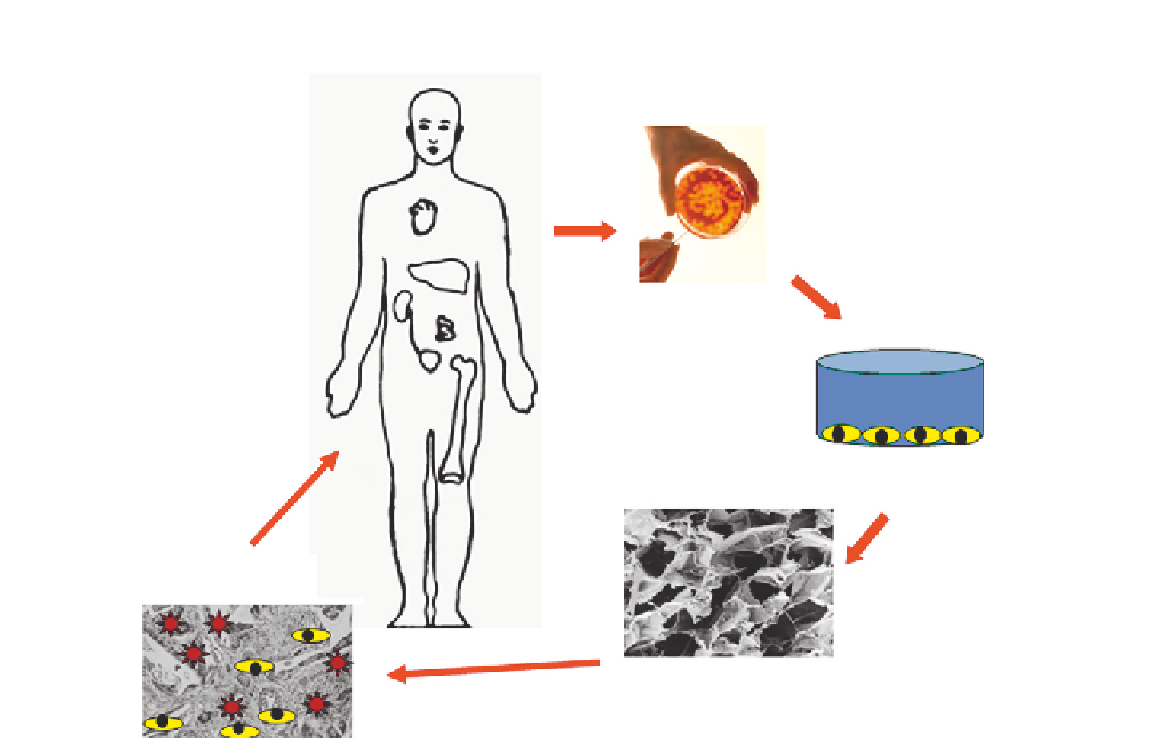Biomedical Engineering Reference
In-Depth Information
Cell isolation
Expansion
Growth factor
Biodegradable
Polymer Scaffold
fabrication
Incorporation cells
and growth factor
FIGURE 14.1
Three key factors; scaffold for cell proliferation and differentiation, and growth factors; for successful tissue
regeneration.
the autograft and allograft although they provide good mechanical support. Different from artificial
biomaterials, one of the important advantages for the bone graft is to positively accelerate osteocon-
duction and osteoinduction. As one trial to tackle and improve the points to be resolved, bone tissue
engineering has been attracted much attention as a new therapeutic technology
[1,2]
. The principal
idea is to provide the key cells the local environment which is suitable to promote their proliferation
and differentiation for the induction of tissue regeneration.
Generally, there are three factors necessary for tissue engineering, such as cells, the scaffold for cell
proliferation and differentiation, and growth factors. If no treatment is provided, a large-size body defect
will be naturally occupied with fibrous tissues and consequently, the defect would never be repaired by the
right tissue. For successful bone regeneration, it is indispensable to efficiently build up the regeneration
environment by making use of various biomaterials or their combination with key cells and growth factors.
Figure 14.1
shows a schematic illustration of tissue regeneration based on the scaffold (for cell
proliferation and differentiation) and the growth factors. It is well recognized that the extracellular

